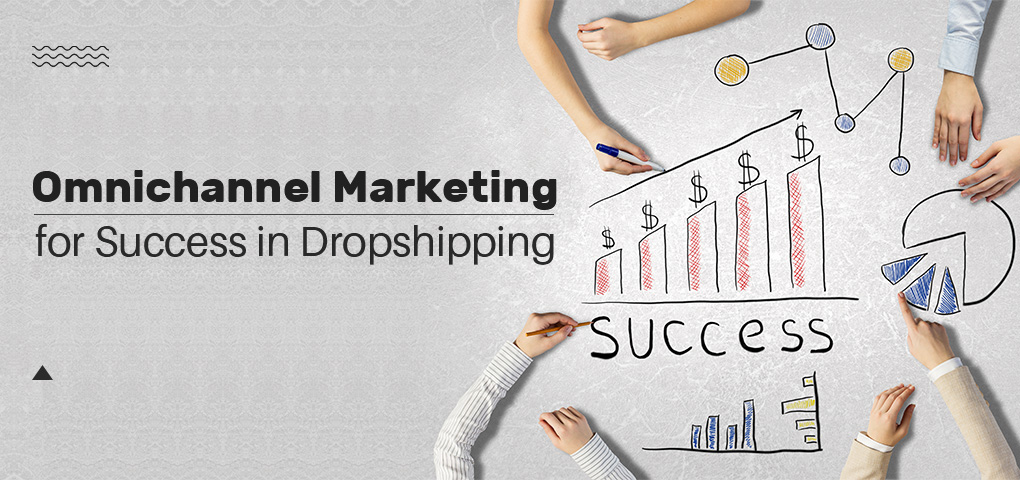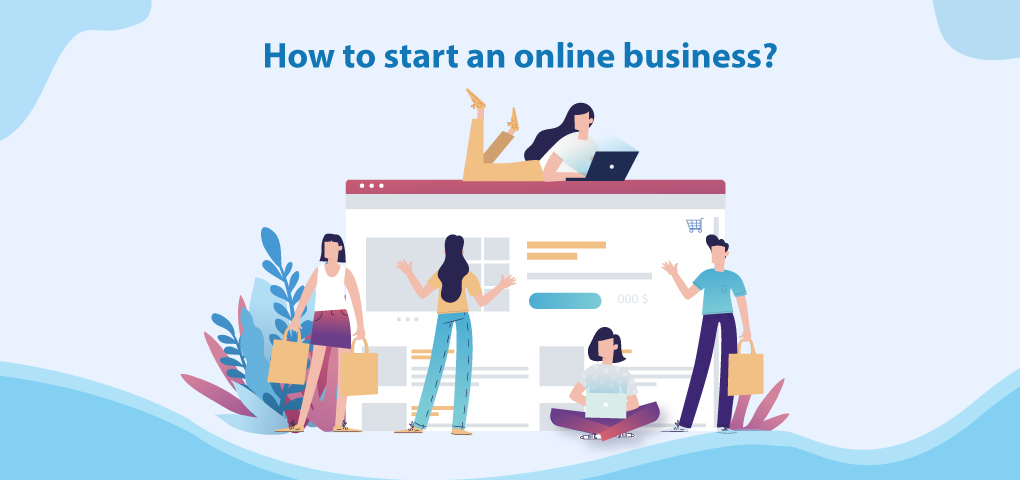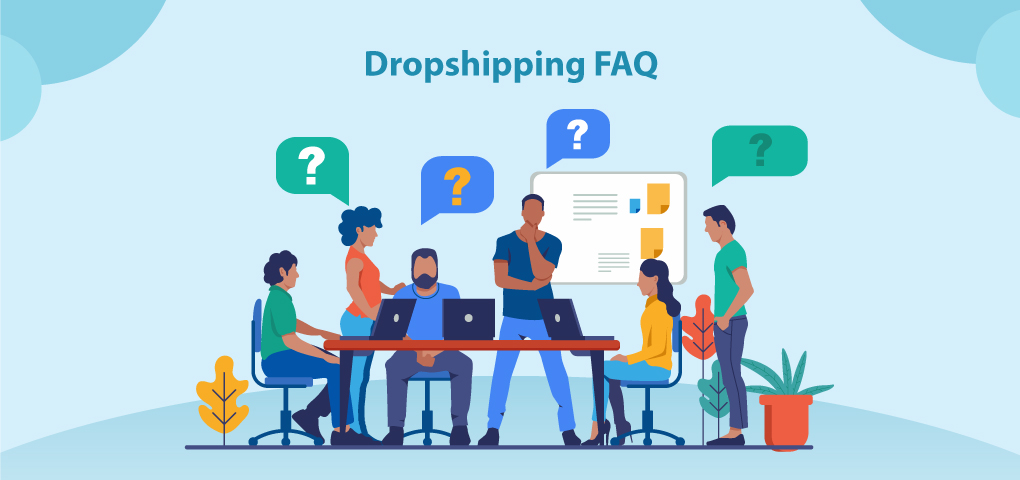Omnichannel may be new to you as a word, but you are practicing the art. Technology has created multiple channels for the seller and buyer to interact in today's world both online and offline.
Buyers shop across multiple channels on their various gadgets online. As a dropshipper, looking to be successful, you need to understand the intricacy of omnichannel marketing and leverage on it. It is the one marketing strategy that lets you interact with your customers on multiple channels and yet give them a consistent and seamless experience.
The content of this article is a comprehensive guide to help understand all you need to know about omnichannel marketing and be able to apply it in your dropshipping business.
What Is Omnichannel Marketing?
The marketing world has experienced a massive change and you'll get to hear more terminologies. Two main ones in this era are omnichannel marketing and multichannel marketing. As someone who is into marketing, you need to know these terminologies.
Omnichannel meaning
It is a content strategy that borders across multiple channels improving the customer experience and buyer-seller relationship on the various touchpoints and channels. The channels include conventional channels, physical stores, point of sales, digital channels, and online experiences.
Omnichannel marketing definition
Omnichannel marketing is creating across all channels and touchpoints, seamless customer experience for your customers. It is a marketing strategy that integrates digital channels like social media, and website/E-Commerce stores with interpersonal interactions. All departments in a business need to work hand in hand for a positive result to be achieved with omnichannel marketing.
Benefits of Omnichannel Marketing
The north star among all marketing strategies is the omnichannel marketing strategy. If you implement it properly, you will accrue the following on your list of benefits for using an omnichannel marketing strategy.
1. Higher Customer Loyalty and Retention
It is a known psychological fact that customers will patronize their trusted and valued brand. The efforts in omnichannel marketing are geared towards creating a smooth and hassle-free experience for customers across all touchpoints. This will make a happy customer and a happy customer become loyal customers who stick to buying from you and spreading the word about your business.
2. Brand Recall will Improve
The core of omnichannel Is to ensure a consistent customer experience when customers come across your brand on multiple channels on their devices. Consistency of your brand across all platforms strengthens your brand recall. With this, you have higher chances of recording more sales from your customer base.
3. Increase in Revenue
Ensuring the core of an omnichannel marketing strategy, you get more loyal customers and improved brand recall. With your customers being happy and buying from you, you are selling more and generating more revenue.
Omnichannel vs. Multichannel marketing
Both multichannel marketing and omnichannel marketing are distinctively two different marketing strategies. Though both are similarities in using multiple channels to interact with their customers and prospective customers.
Going with their definition:
Multichannel marketing is the strategy of reaching out to customers and prospective customers through multiple channels.
Omnichannel marketing is the marketing strategy that uses multiple channels to reach customers and integrates all channels to give the customers a seamless and consistent experience.
With a glance at both definitions, you would realize each method has a common aim of reaching customers through multiple channels. The diction becomes clearer in the result of each approach. Why? The customers are the core of the omnichannel marketing strategy. To better clarify the differences, here are some points to note:
1. Channel vs. Customer
A multichannel marketing strategy is about reaching out to customers on more and more channels. The aim of a multichannel marketing strategy is the more the merrier. On the other hand, an omnichannel marketing strategy is about reaching consumers on multiple channels that are integrated.
2. Consistency vs. Engagement
When it comes to multichannel marketing strategy, the goal is more about engagement. While in the case, of omnichannel marketing, the goal is to ensure that consumers on the various channels have a consistent experience. To simply put- the brand is popular but with no signature experience when multichannel marketing is used while the brand will be known for a signature experience in the case of an omnichannel marketing strategy.
How to Use Omnichannel Marketing Strategy for Success in Dropshipping
In the era we are now, the marketing world has had an increase in the number of channels for buyer-seller interaction. As someone who is wanting to leverage on an omnichannel marketing strategy to be successful in dropshipping, you need to take these following steps:
1. Your Customers Comes First
Your consumers should be your core. The first step starts with focusing on your consumers. Have a keen look at the customer experience at every touchpoint, are they having a seamless and consistent experience. Work to adjust where needed to ensure your consumers have a hassle-free and seamless experience across all platforms they journey through.
2. Acquaint Yourself with Your Customers
It can not be overemphasized that marketers should know their consumers. Knowing the customers involves profiling various buyers, identifying the target audience, knowing their buyer personas, their goals, and more. You should then leverage on the accrued data. They will help you understand the need of your customers and serving them becomes easier. It is important to use the right tool and method to accumulate data and analyze it.
3. Use the Right MarTech
You should endeavor to make the right choice when seeking the tools that connect you with your customers. It is no denial that choosing from your tech stark is difficult that is why it is recommended that you start with the following solutions:
- Marketing Automation Tools
- Customer Data Platforms
- Data Analyst Tools
- Customer Relationship Manager (CRM) Software
- Social Media Management Solutions
It is important to do a grouping of your audience. It will help you have a target-oriented outreach. They can be grouped based on behaviors, buyer personas, subscription status, buyer paths, and more.
5. Personalize Across All Touchpoints
personalizing is important in an omnichannel marketing strategy. One of the amazing experiences you can give your consumers is to make them feel appreciated. You can achieve this by personalizing the content sent to them. With appropriate data and tools, this can easily be achieved. Doing this strengthens your buyer-seller relationship.
6. Track your Progress
Finally, you should track your progress using the right metrics. Take needed actions when needed. With the use of the right metrics, you have the genuine details. You can improve where needed. It will ultimately increase your ROI.
Final Thoughts
Omnichannel marketing strategy is the north star, among marketing strategies that can help you give the integrated user experience across multiple channels and touchpoints. With it, customer loyalty, brand awareness, and ultimately sale that leads to increased revenue are achieved with Omnichannel marketing. Implementing an omnichannel marketing strategy as a dropshipper will help you to be successful.




